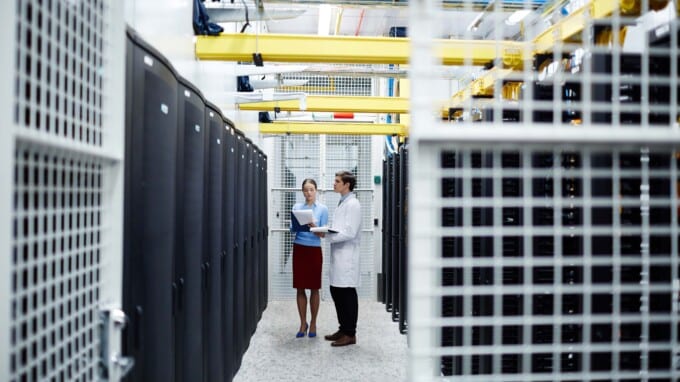Office Workstations: Casegoods vs. Modular Furniture
When planning your office layout, you will often have to decide whether to primarily use casegoods or modular furniture to fill the … Continued
When planning your office layout, you will often have to decide whether to primarily use casegoods or modular furniture to fill the space. Before you stop reading this and reach for a dictionary, casegoods and modular furniture are actually quite simple terms once you distill them down to their basic concepts.
Casegoods can be defined as any type of freestanding furniture or storage that is placed within a private office or room. Think desks, hutches, credenzas, filing cabinets, bookshelves, or tables. Typically these pieces are made of wood or metal (sturdy materials) and are not upholstered. Modular furniture refers to solid, mobile furniture systems. This includes cubicles, paneling, rolling tables and storage. Most modular furniture is designed to be added onto and can be broken down easily if it’s no longer being used.
Much of the process of choosing between casegoods or modular furniture comes down to how your office functions. Are the majority of the offices enclosed with doors and windows? Then casegoods are likely a sensible choice. Is your office set up to accommodate a constant cycle of employees without permanent workspaces? Well, modular furniture can add extra flexibility.
Fortunately, both casegoods and modular furniture offer companies and organizations the ability to adapt to a changing work world. But what are the advantages and disadvantages of each category of furnishing?
The Case for Casegoods
The first thing to consider when deciding whether to use casegoods in your office is the cost. Take into account the average price per piece and how much you want to realistically spend to furnish your office, particularly if your employees are on a hybrid/staggered schedule.
Once you’ve created a budget, get an estimate of the average installation time from your moving company. Keep in mind that casegoods can take longer to build or arrange compared to modular furniture systems. If you only have a few weeks to get the office ready for your staff, then casegoods may not be the right choice.
Overlooked factors in the casegoods versus modular furniture debate are aesthetics and atmosphere. How do you want your office to be perceived? Are you trying to foster collaboration and creativity? Is an open atmosphere important for communication? While private offices can help people concentrate and have better one-on-one meetings, they can also be isolating. Think about what message you are hoping to communicate to employees through the layout of your office.
Benefits of casegoods furniture:
• Easy reconfigurations
• More personalized
• Ability to add new pieces
• Creates a home-like atmosphere
• Pieces are more durable
Downsides of casegoods furniture:
• No paneling system = less privacy in an open room
• Requires more floor space
• Limited uses
• Heavier and more difficult to transport
Modular Furniture for a Modern Office
When it comes to modular furniture, it’s crucial to remember that every piece is part of a larger system (e.g., cubicles are typically arranged in groups of four). Although this allows for a better utilization of existing space, these pieces are usually more expensive than casegoods.
Mapping out how to arrange modular furniture ahead of time will cut down on labor and cost. As you begin setting up workstations, pay attention to how each one will function. If some of your employees will be hot desking, an office seating system that has multiple people share desk space based on their differing schedules, then make sure that they have enough space and the station is near restrooms, a breakroom and other essentials.
Also, be mindful of how noise carries in an open office. Sometimes spacing out cubicle groupings can help reduce distractions and allow people to work in peace. Having shared spaces, such as conference rooms, where employees can gather and have discussions, are especially vital in this environment.
Benefits of modular furniture:
• Level of customization
• Systems can be combined (high/low panels)
• Virtually unlimited configurations
• Room for company to grow (add or subtract workstations)
• Easily replaceable parts
• Mobility and flexibility
Downsides of modular furniture:
• Complex installation process
• Higher overall installation cost
• Not as sturdy as casegoods furniture
Partnering with a Workplace Solutions Provider
Regardless of whether you’re a startup or an established company, the right office furniture is key to making your employees feel comfortable and engaged. Partnering with a workplace solutions provider can help ensure your organization’s furniture selection and eventual setup meets your unique needs. Updating and installing new furniture is a big investment, not to mention the time and planning it takes to coordinate it all around your employees’ work schedules and minimize potential downtime. Never underestimate the value of having a dedicated expert who can help you navigate these factors so your team’s productivity and investment isn’t adversely affected.
To learn more about Hilldrup’s workplace services, visit our website. From commercial and workplace moving to office furniture installation, reconfigurations and workspace design, we have solutions for every corner of your workplace.


